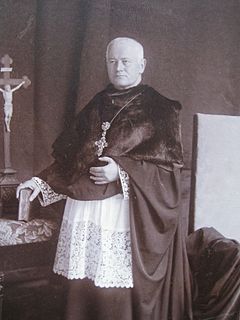A bishop is an ordained, consecrated, or appointed member of the Christian clergy who is generally entrusted with a position of authority and oversight.

Pope John II was pope of the Catholic Church from 2 January 533 to his death in 535.

Pope Zosimus reigned from 18 March 417 to his death in 418. He was born in Mesoraca, Calabria.
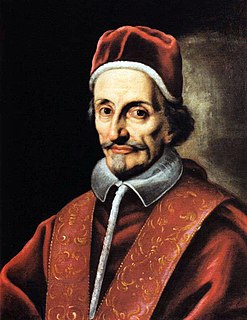
Pope Innocent XI, born Benedetto Odescalchi, was Pope from 21 September 1676 to his death. He is known in Budapest as the "Saviour of Hungary".
An ecclesiastical court, also called court Christian or court spiritual, is any of certain courts having jurisdiction mainly in spiritual or religious matters. In the Middle Ages these courts had much wider powers in many areas of Europe than before the development of nation states. They were experts in interpreting canon law, a basis of which was the Corpus Juris Civilis of Justinian which is considered the source of the civil law legal tradition.

Personal prelature is a canonical structure of the Catholic Church which comprises a prelate, clergy and laity who undertake specific pastoral activities. The first personal prelature is Opus Dei. Personal prelatures, similar to dioceses and military ordinariates, are under the governance of the Vatican's Congregation for Bishops. These three types of ecclesiastical structures are composed of lay people served by their own secular clergy and prelate. Unlike dioceses which cover territories, personal prelatures—like military ordinariates—take charge of persons as regards some objectives regardless of where they live.
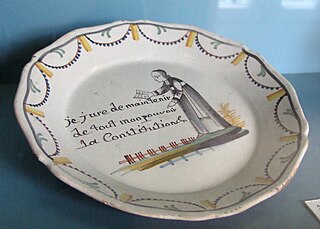
The Civil Constitution of the Clergy was a law passed on 12 July 1790 during the French Revolution, that caused the immediate subordination of the Catholic Church in France to the French government.
A commendatory abbot is an ecclesiastic, or sometimes a layman, who holds an abbey in commendam, drawing its revenues but not exercising any authority over its inner monastic discipline. If a commendatory abbot is an ecclesiastic, however, he may have limited jurisdiction.

A provincial superior is a major superior of a religious institute acting under the institute's Superior General and exercising a general supervision over all the members of that institute in a territorial division of the order called a province—similar to but not to be confused with an ecclesiastical province made up of particular churches or dioceses under the supervision of a Metropolitan Bishop. The division of a religious institute into provinces is generally along geographical lines, and may consist of one or more countries, or of only a part of a country. There may be, however, one or more houses of one province situated within the physical territory of another since the jurisdiction over the individual religious is personal rather than territorial. The title of the office is often abbreviated to Provincial.

The Roman Catholic Archdiocese of Santa Fe is an ecclesiastical territory or diocese of the southwestern region of the United States in the state of New Mexico. While the mother church, the Cathedral Basilica of Saint Francis of Assisi, is in the city of Santa Fe, its administrative center is in the city of Albuquerque. The Diocese comprises the counties of Rio Arriba, Taos, Colfax, Union, Mora, Harding, Los Alamos, Sandoval, Santa Fe, San Miguel, Quay, Bernalillo, Valencia, Socorro, Torrance, Guadalupe, De Baca, Roosevelt, and Curry. The current archbishop is John Charles Wester, who was installed on June 4, 2015. The Archdiocese announced it would file for bankruptcy protection on November 29, 2018.
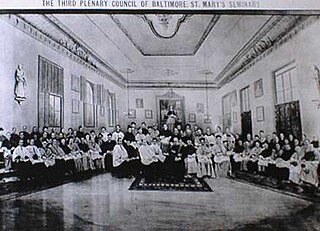
The Plenary Councils of Baltimore were three national meetings of Catholic bishops in the United States in 1852, 1866 and 1884 in Baltimore, Maryland.
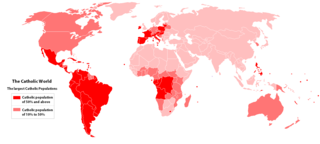
The Catholic Church in Haiti is part of the worldwide Catholic Church, under the spiritual leadership of the Pope, the curia in Rome and the Conference of Haitian Bishops.
The term Clerics Regular designates a number of Roman Catholic priests (clerics), and clergy of other traditions, who are members of a religious order (regular) of clergy, but are not Canons Regular. Clerics regular differ from canons regular in that they do not possess cathedral or collegiate churches; they devote themselves more completely to pastoral care, in place of an obligation to the Liturgy of the Hours in common, and have fewer penitential observances in their Rule of Life.

Cardinal Vicar is a title commonly given to the vicar general of the Diocese of Rome for the portion of the diocese within Italy. The official title, as given in the Annuario Pontificio, is "Vicar General of His Holiness".
A canonical visitation is the act of an ecclesiastical superior who in the discharge of his office visits persons or places with a view to maintaining faith and discipline, and of correcting abuses. A person delegated to carry out such a visitation is called a visitor. When, in exceptional circumstances, the Holy See delegates an Apostolic visitor "to evaluate an ecclesiastical institute such as a seminary, diocese, or religious institute ... to assist the institute in question to improve the way in which it carries out its function in the life of the Church," this is known as an apostolic visitation.

An ecclesiastical judge is an ecclesiastical person who possesses ecclesiastical jurisdiction either in general or in the strict sense. Up until 1858 when Ecclesiastical courts were abolished, ecclesiastical judges tried church clergy men in church courts or Ecclesiastical courts. Charges dealt in these courts were often very lenient, especially when dealt to church clergymen.
In nomine Domini is a papal bull written by Pope Nicholas II and a canon of the Council of Rome. The bull was issued on 13 April 1059 and caused major reforms in the system of papal election, most notably establishing the cardinal-bishops as the sole electors of the pope, with the consent of minor clergy.
Romanis Pontificibusis a papal decree, issued on 6 June 1975 by Pope Paul VI, that concerns the Herzegovina Affair: the Franciscan friars of Herzegovina took control of the local parishes and refused to hand them over to the local bishops and priests, despite the Franciscan vow of obedience. The decree specified the relative jurisdictions of the friars and the diocesan clergy.

The Concordat of 1854 was an international treaty between the president of the Republic of Guatemala - General Captain Rafael Carrera - and the Holy See, which was signed in 1852 and ratified by both parties in 1854. Through this, Guatemala gave the education of Guatemalan people to regular orders Catholic Church, committed to respect ecclesiastical property and monasteries, imposed mandatory tithing and allowed the bishops to censor what was published in the country; in return, Guatemala received dispensations for the members of the army, allowed those who had acquired the properties that the Liberals had expropriated the Church in 1829 to keep those properties, perceived taxes generated by the properties of the Church, and had the right to judge certain crimes committed by clergy under Guatemalan law. The concordat was designed by Juan José de Aycinena y Piñol and reestablished the relationship between Church and State in Guatemala. It was in force until the fall of the conservative government of Marshal Vicente Cerna y Cerna






